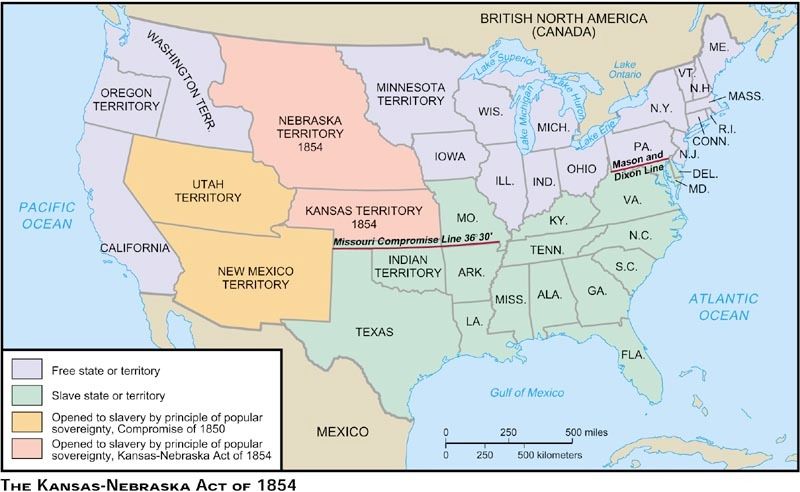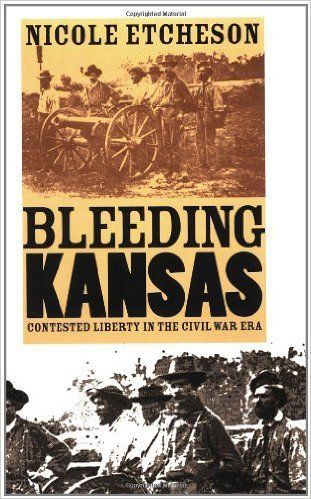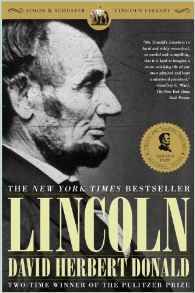As you can tell by the title of this thread I don’t plan on posting very much, at least for a good long while. As mentioned previously, Harpers Weekly is available on line from 1858 on. I have downloaded the first year for posting beginning 2018. Since there will be long periods between 160-year-old news posts I thought we could fill the time by comparing notes on books about the period and discussing the history that led up to the “Bleeding Kansas†affair. I will attempt to lay out the basic facts now.

A real look at the history of slavery in the United States would go back to the 17th century at least and could go as far back as the age of the Torah, but I will start with the Compromise of 1820 (Missouri Compromise). https://en.wikipedia.org/wiki/Missouri_Compromise That was devised by Henry Clay, an icon of the Whig party (of which A. Lincoln was a member). The compromise was intended as a solution to disputes of whether newly organized territories and states of the U.S. would allow slavery or not. It set a dividing line at 36° 30’ north latitude. Slavery would be prohibited in territory north of the line and allowed south of it. The exception was Missouri, which was north of the line but was admitted as a slave state.
By 1854 members of Congress were eager to start settling the vast farmlands of the new territory and it was necessary to first organize the region. One member most active in this effort was Senator Stephen A. Douglas of Illinois. He wanted to get on with the building of a transcontinental railroad, with the eastern head at Chicago. The plan was blocked because he couldn’t get a measure passed in the Senate establishing new territories of Kansas and Nebraska under the terms of the Missouri Compromise. Southern Senators insisted that Kansas (north of 36° 30’ latitude) be open to slavery under popular sovereignty, that is, it would be left to a popular vote of the citizens of the new territory to decide whether slavery would be permitted or prohibited. The Kansas-Nebraska Act of 1854, introduced by Douglas, overturned the Compromise of 1820 and mandated popular sovereignty in the two new territories. With overwhelming southern support the measure passed both houses of Congress in May 1854. https://en.wikipedia.org/wiki/Kansas%E2%80%93Nebraska_Act The troubles in Kansas began immediately.
This is all covered in detail in “Bleeding Kansas: Contested Liberty in the Civil War Era,†by Nicole Etcheson.

The excerpt I started off with come from chapter 4, “We Are But Slaves: The Free-State Movement.†Chapter 1 covers Douglas’s effort to get the Kansas-Nebraska Act through Congress. Chapter 2 is about the migration of both slavery proponents and free-soilers to the new territory after its passage. Chapter 3 covers the unbelievably flawed process used to elect the first territorial legislature. That was all-important since that body would vote on whether Nebraska was to be a slave or free state.
I have found “Bleeding Kansas†to be quite readable for a non-scholar like me; well organized, plenty detailed, and straightforward in style. The time period covered is 1854 to 1864, so it should provide background for almost the whole period of this forum.
The other book I have started is a biography by David Herbert Donald called simply “Lincoln.†I picked that one from the vast selection of such works base on reading a few reviews at Amazon.

I hope to acquire more Lincoln bios over the course of the next few years but I wanted to start with a well-regarded, single volume book. I have only gotten to 1856 in the chronology but have enjoyed the book so far. It starts with descriptions of some of Abraham’s ancestors in Virginia and moves to the primitive frontier boyhood I remember from long-ago. His early days in New Salem, Illinois are covered, as he decided what to do with his life. He won a seat in the Illinois state legislature in 1834 and studied to be a lawyer. He balanced his political activities with the law. He was junior partner in two different firms before becoming senior partner when he joined with William “Billy†Herndon. That association continued until Lincoln went to Washington. By 1855 the firm was thriving, with railroad cases the most lucrative. In 1842 Lincoln married Mary Todd and they started a family in Springfield. After two terms in the Illinois legislature he was elected to the U.S. House of Representatives as a Whig. He had to master the Illinois political game to accomplish that. He attempted to work that system to be selected as U.S. Senator from Illinois in January 1855. But that was a longshot proposition and he lost out to Lyman Trumbull. The book explained some about the Whig party and also the Know Nothings. I always wondered about that name and now know it stems from the fact that membership was supposed to be secret. So if an outsider asked what they were up to the member supposedly replied, “I know nothing.†Why a political party should remain a secret I didn’t figure out. Initially the Republican party had an abolitionist tilt, which was considered radical – even in the north. So mainstream politicians – including Lincoln – steered clear of it. By 1854, however, with the future of the Whigs looking grim, Republicans were ready to organize as a free-soil alternative to the Democrats. Lincoln enthusiastically jumped in to advise the non-lawyers in that pursuit.
Lincoln was out of office in 1854 during the Kansas-Nebraska Act debate. I was interested to learn that he shadowed Sen. Stephen A. Douglas (D-Il) as that man traveled the state promoting his measure. Douglas gave a speech in Springfield on October 3 and Lincoln spoke in rebuttal the following day. They repeated the exercise October 16 in Peoria. They didn’t appear together on the same stage but those events seem a notable preview to the celebrated Lincoln-Douglas debates four years later.
That covers the highlights, I think. I recommend both these books and hope to read other recommendations of books covering the pre-Civil War period.